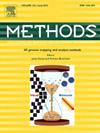Multi-filter based signed heterogeneous graph convolutional networks for predicting activating/inhibiting drug-target interactions
IF 4.3
3区 生物学
Q1 BIOCHEMICAL RESEARCH METHODS
引用次数: 0
Abstract
The prediction of mechanisms within drug-target interactions (DTIs) can boost the drug discovery process, which has traditionally relied on time-consuming and expensive laboratory experiments. Despite much more attention has been paid to predicting DTIs, but few studies focused on their activating/inhibiting mechanisms. In this work, we model DTIs on signed heterogeneous networks, through categorizing activating/inhibiting DTIs into signed links, and accordingly introducing the coherence/incoherence between drugs on a common target to construct signed drug-drug links. We propose a multi-filter based signed heterogeneous graph convolutional network (MFSHGCN) for drugs and targets embedding, via employing dual filters on both the signed drug-drug sub-graph and the signed DTI sub-graph to converge the spectral information from positive and negative edges. We further put forward an end-to-end framework to predict activation and inhibition within DTIs. The comparison results demonstrate the introduction of coherence/incoherence of drug pairs and the design of our multi-filter system can effectively improve the prediction metrics, even without relying on rich node information and interactions from drug pairs or target pairs. Case studies on breast cancer and lung cancer confirm the model's feasibility.
基于多滤波器的预测药物-靶标相互作用激活/抑制的签名异构图卷积网络。
药物-靶标相互作用(DTIs)机制的预测可以促进药物发现过程,这一过程传统上依赖于耗时且昂贵的实验室实验。尽管对dti的预测已经引起了广泛的关注,但对其激活/抑制机制的研究却很少。在这项工作中,我们在签名异构网络上建模dti,通过将激活/抑制dti分类为签名链接,并相应地引入共同靶标上药物之间的一致性/不一致性来构建签名药物-药物链接。本文提出了一种基于多滤波器的药物和目标嵌入的有签名异构图卷积网络(MFSHGCN),通过对有签名药物-药物子图和有签名DTI子图使用双重滤波器来收敛正负边的谱信息。我们进一步提出了一个端到端的框架来预测dti内的激活和抑制。对比结果表明,即使不依赖于丰富的节点信息和药物对或目标对的相互作用,引入药物对的相干性/非相干性以及我们设计的多滤波器系统也可以有效地提高预测指标。乳腺癌和肺癌的案例研究证实了该模型的可行性。
本文章由计算机程序翻译,如有差异,请以英文原文为准。
求助全文
约1分钟内获得全文
求助全文
来源期刊

Methods
生物-生化研究方法
CiteScore
9.80
自引率
2.10%
发文量
222
审稿时长
11.3 weeks
期刊介绍:
Methods focuses on rapidly developing techniques in the experimental biological and medical sciences.
Each topical issue, organized by a guest editor who is an expert in the area covered, consists solely of invited quality articles by specialist authors, many of them reviews. Issues are devoted to specific technical approaches with emphasis on clear detailed descriptions of protocols that allow them to be reproduced easily. The background information provided enables researchers to understand the principles underlying the methods; other helpful sections include comparisons of alternative methods giving the advantages and disadvantages of particular methods, guidance on avoiding potential pitfalls, and suggestions for troubleshooting.
 求助内容:
求助内容: 应助结果提醒方式:
应助结果提醒方式:


